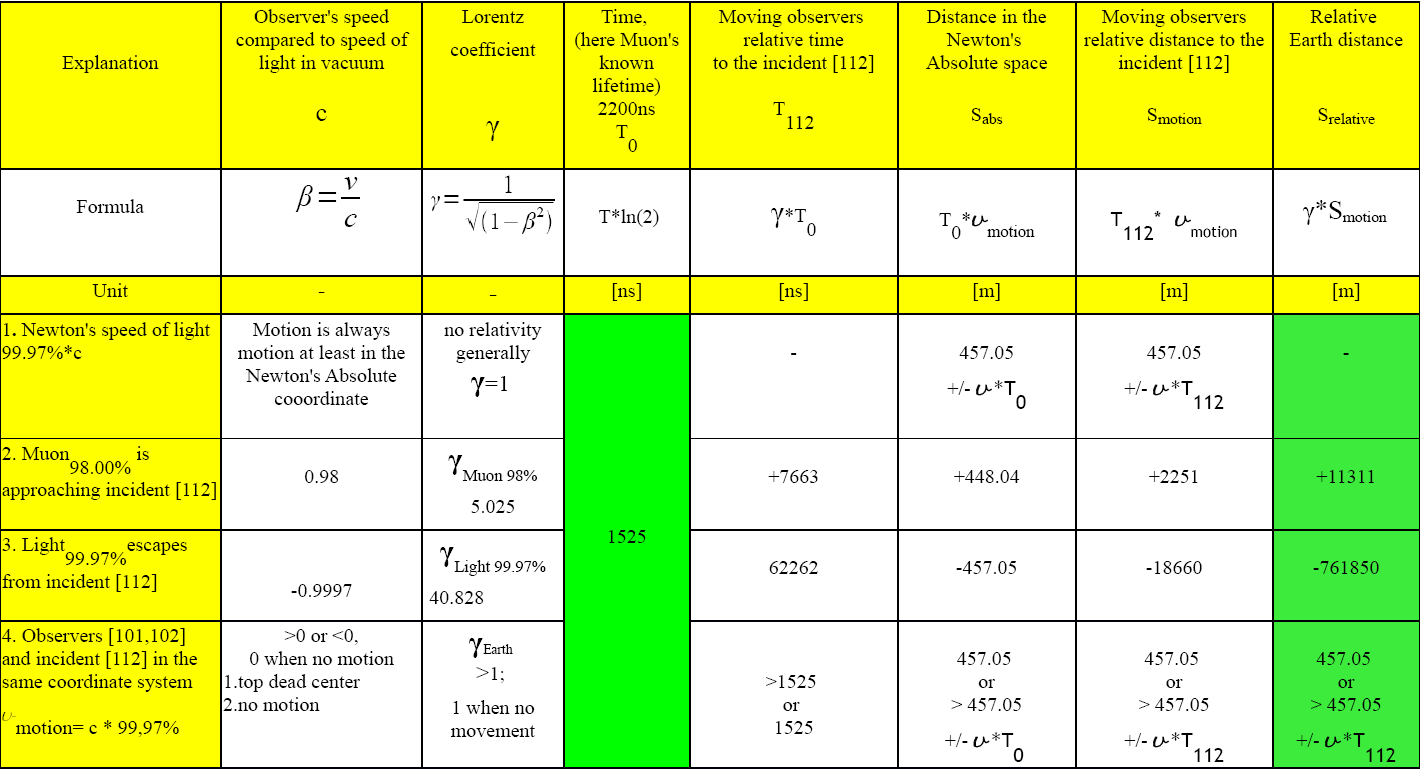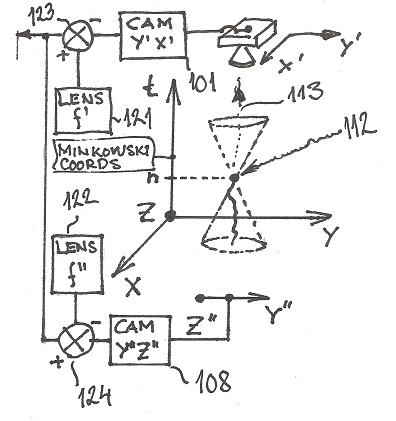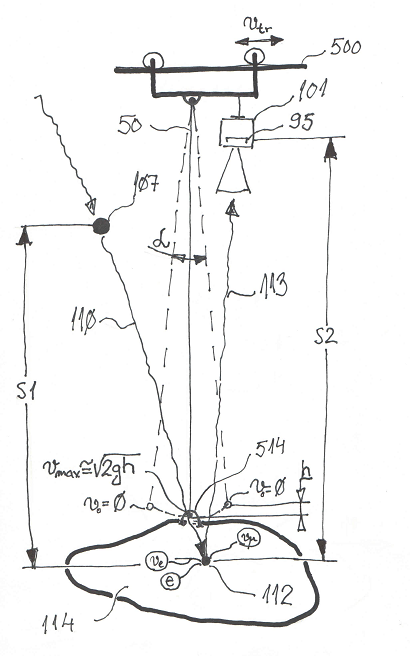Two or more observers and simultaneity
Optic motion detection
Picture 2: 
|
When motion speed v is small, beta will get closer zero (0). When speed is near speed of light c, |
Time and distance difference between different speed traveling observers should be calculated according Lorentz factor γ:
The use of time and distance relativity come more important with speeds [v] which get closer the speed of light [c].
Here we keep important to use relative theory, both special and general theory for remote motion detection.
Special theory's electromanetic wave motion transfer paralell information [113] the fastest way of any.
General theory states that the space is curved. Gravitation is universal and the weakest force.
- 1. Gravitational force. Every particle feels the force of gravity according its mass or energy.
- 2. Electromagnetic force. Interact with electrically charged particles. 10^42 times bigger than gravitational force.
- 3. Weak nuclear force. Responsible for radioactivity.
- 4. Strong nuclear force. The strongest force. Keep quarks together.
Force-carrying particles in the physics:
To measure gravitational force dependent forcies more accurate, we need the good remote bodies positioning. We can adjust motion under weak gravitational force with strong electromagnet force with optical closed loop motion control by using remote motions measured speed [v] when distance is known without using any Newton's gravity acceleration constant g.
Distance and time realativity study use muon know lifetime (2200 nano seconds) as a time reference. When muon hits to object surfice, we asume that muons parts reflect out back to space with a speed of light in the air. In the air speed of light is effected by refraction index 1,0003 so that v=99,97*c.
A short study of relativity based on the facts known about muon how they act according special relativity
- Row 1: In the Newton's absolute space and time
- Row 2: When approaching towards incident [112] with speed of muon (98%*c)
- Row 3: When diverge from incident [112] with a speed of almost of speed of light (99,97%*c) in the air
- row 4: Incident [112] and observer [100,101,108] locate in the same coordinate system
Table 1 row descriptions
Table 1:Relativity in the respect of Muons life 
Relative time[column 5] and distance [column 8]. From incident reflecting paralel light waves carry information which must be static. Light waves do not have mass and they travel in the air with a maximum speed of 99,97%*c. See hyperphysics.phy-astr.gsu.edu Muon |
Muon has a mass when light is massless.
This study was first done to check whether reflecting information [113] would have its own age or not.
This is not possible because light do not have mass and it has not internal timer, lifetime or such element. When a observer [100,101,108] has received information in a form of light waves [113], this information is static to time and place to the reflecting point [112] in the observer's [100,101,108] coordinate system.
As young Einsteing as a student was wondering if a man could ride on light beam. He got to the conclution that this was not possible.


